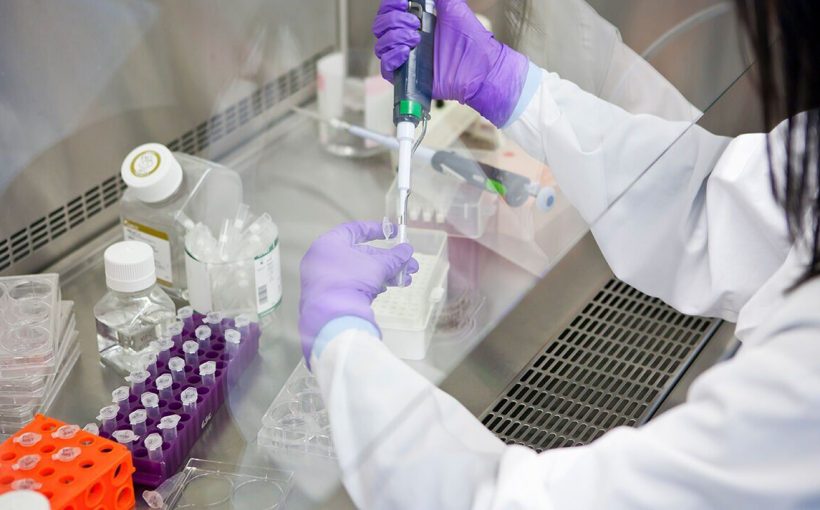Cancer symptoms: Top 14 early signs to look out for
There are more than 160,000 deaths from cancer in the UK every year. This equates to around 460 each day. While there are a range of treatments available, including chemotherapy, radiotherapy and surgery, these are not guaranteed cures.
Therefore, any new developments that could help detect and treat the disease are vital.
Scientists at Northwestern University in the US believe they could have discovered a new way to do so, by harnessing patients’ blood cells.
To do so they built on the fundamentals of an existing immunotherapy called adoptive cell therapy (ACT), used to help treat advanced melanoma.
In ACT, T cells are usually taken from the patient’s blood or tumour tissue and grown in large numbers in the laboratory.

They are then given back to the patient to help the immune system fight the cancer
But for the first time researchers have discovered it is possible to isolate a tumour’s attack cells non-invasively from blood.
The finding opens the door for ACT to treat harder-to-reach cancer types and makes it a more viable option for hospitals.
Shana Kelley, the paper’s corresponding author, said: “We started asking questions about whether the immune cells that go into tumours come back out, and if you could find them in the bloodstream.
Don’t miss…
New Boots skin cream could heal ageing skin, burns and scars[LATEST]
Don’t brush your teeth straight after eating chocolate, says hygienist[EXPERT]
New study finds the diet that could ‘lower chances’ of type 2 diabetes[STUDY]
“We didn’t know if we’d be able to find them or if we could see enough of them to even study them. Sure enough, they’re in the blood.
“This is the first time these cells have been studied in this context.”
The study, published in the journal Nature Biomedical Engineering, builds on previous work from Ms Kelley’s lab that was published last year in the same journal.
In the previous study, Ms Kelley and her team treated mice with their own immune cells gathered from a mass, which dramatically shrunk their tumours, compared to traditional cell-therapy methods.

The 2022 paper also detailed the novel method used to isolate and multiply tumour-infiltrating lymphocytes (TILs), a process that efficiently sorts through and harvests cells to recover 400 percent more than current approaches, ultimately making the anti-cancer response stronger.
The research process
By removing and processing melanoma tumours, scientists found TILs within them. But sometimes removing tumours to harvest TILs can pose significant risks to patients, leaving no path to harness the cells needed for ACT to fight many types of cancer.
So Ms Kelley wondered if TILs might exist elsewhere in the body – outside tumours.
After finding TIL-like lymphocytes – or circulating tumour-reactive lymphocytes (cTRLs) – in animal blood, the team tested whether or not cTRLs had the same ability as TILs to kill tumour cells, which they did.

To overcome another major stumbling point, after finding and profiling cTRLs, Ms Kelley’s lab used its novel technology platform to isolate and then replicate only the best tumour fighters.
Again, cTRLs effectively levelled their competition by engaging in direct, “hand-to-hand” combat with tumour cells.
Scientists also found cTRLs not just in melanoma models, but in colon, lung and breast cancer, each tumour expressing a unique signature that TILs bind to.
Ms Kelley added: “This new breakthrough leads us to ask some exciting questions about how early cTRLs appear in blood.
“Could we diagnose and treat cancer earlier using these cells?”
Source: Read Full Article
